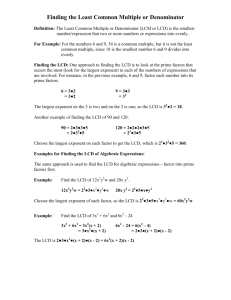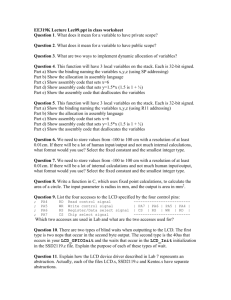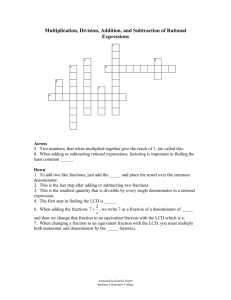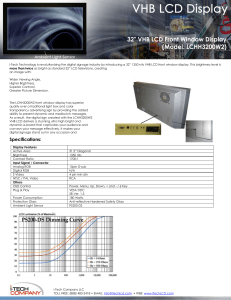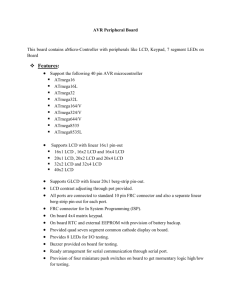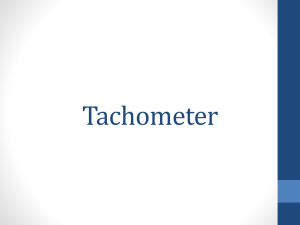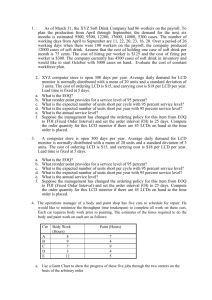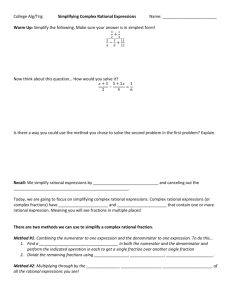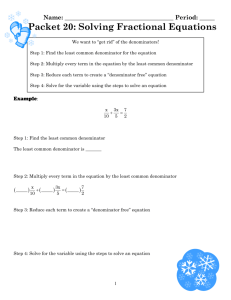Finding the Least Common Multiple or Denominator
advertisement
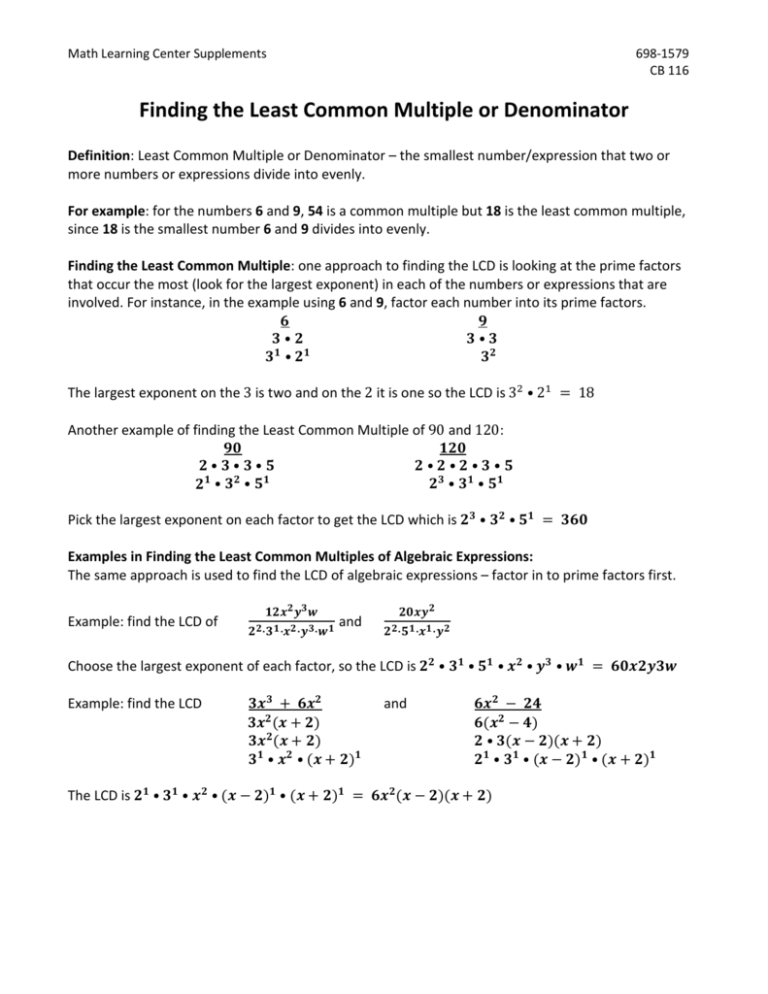
Math Learning Center Supplements 698-1579 CB 116 Finding the Least Common Multiple or Denominator Definition: Least Common Multiple or Denominator – the smallest number/expression that two or more numbers or expressions divide into evenly. For example: for the numbers 6 and 9, 54 is a common multiple but 18 is the least common multiple, since 18 is the smallest number 6 and 9 divides into evenly. Finding the Least Common Multiple: one approach to finding the LCD is looking at the prime factors that occur the most (look for the largest exponent) in each of the numbers or expressions that are involved. For instance, in the example using 6 and 9, factor each number into its prime factors. 𝟔 𝟗 𝟑•𝟐 𝟑•𝟑 𝟏 𝟏 𝟑𝟐 𝟑 •𝟐 The largest exponent on the 3 is two and on the 2 it is one so the LCD is 32 • 21 = 18 Another example of finding the Least Common Multiple of 90 and 120: 𝟗𝟎 𝟏𝟐𝟎 𝟐•𝟑•𝟑•𝟓 𝟐•𝟐•𝟐•𝟑•𝟓 𝟐𝟑 • 𝟑𝟏 • 𝟓𝟏 𝟐𝟏 • 𝟑𝟐 • 𝟓𝟏 Pick the largest exponent on each factor to get the LCD which is 𝟐𝟑 • 𝟑𝟐 • 𝟓𝟏 = 𝟑𝟔𝟎 Examples in Finding the Least Common Multiples of Algebraic Expressions: The same approach is used to find the LCD of algebraic expressions – factor in to prime factors first. Example: find the LCD of 𝟏𝟐𝒙𝟐 𝒚𝟑 𝒘 and 𝟏 𝟐𝟎𝒙𝒚𝟐 𝟐𝟐 ∙𝟑𝟏 ∙𝒙𝟐 ∙𝒚𝟑 ∙𝒘 𝟐𝟐 ∙𝟓𝟏 ∙𝒙𝟏 ∙𝒚𝟐 𝟑𝒙𝟑 + 𝟔𝒙𝟐 𝟑𝒙𝟐 (𝒙 + 𝟐) 𝟑𝒙𝟐 (𝒙 + 𝟐) 𝟑𝟏 • 𝒙𝟐 • (𝒙 + 𝟐)𝟏 and Choose the largest exponent of each factor, so the LCD is 𝟐𝟐 • 𝟑𝟏 • 𝟓𝟏 • 𝒙𝟐 • 𝒚𝟑 • 𝒘𝟏 = 𝟔𝟎𝒙𝟐𝒚𝟑𝒘 Example: find the LCD 𝟔𝒙𝟐 − 𝟐𝟒 𝟔(𝒙𝟐 − 𝟒) 𝟐 • 𝟑(𝒙 − 𝟐)(𝒙 + 𝟐) 𝟐𝟏 • 𝟑𝟏 • (𝒙 − 𝟐)𝟏 • (𝒙 + 𝟐)𝟏 The LCD is 𝟐𝟏 • 𝟑𝟏 • 𝒙𝟐 • (𝒙 − 𝟐)𝟏 • (𝒙 + 𝟐)𝟏 = 𝟔𝒙𝟐 (𝒙 − 𝟐)(𝒙 + 𝟐)


